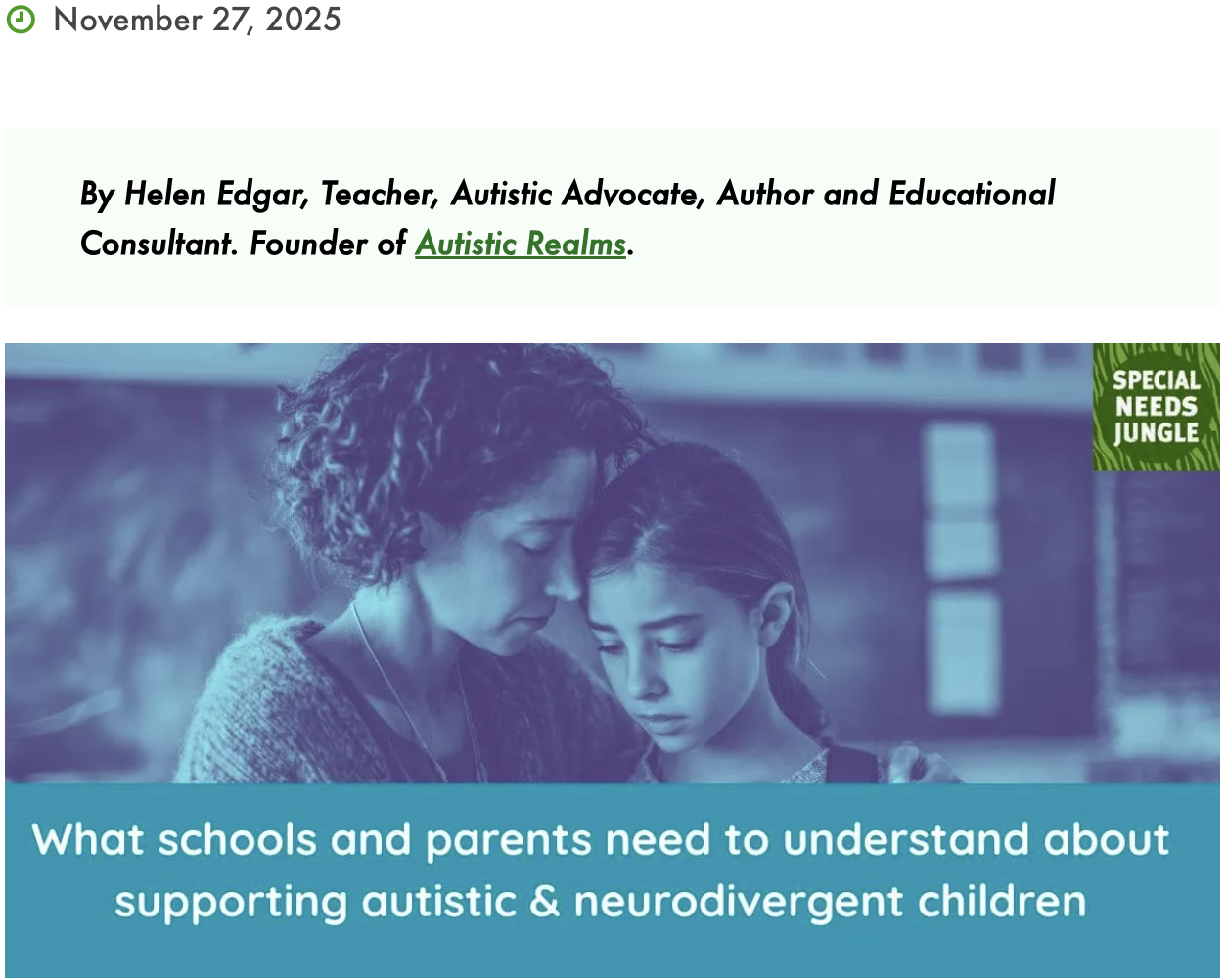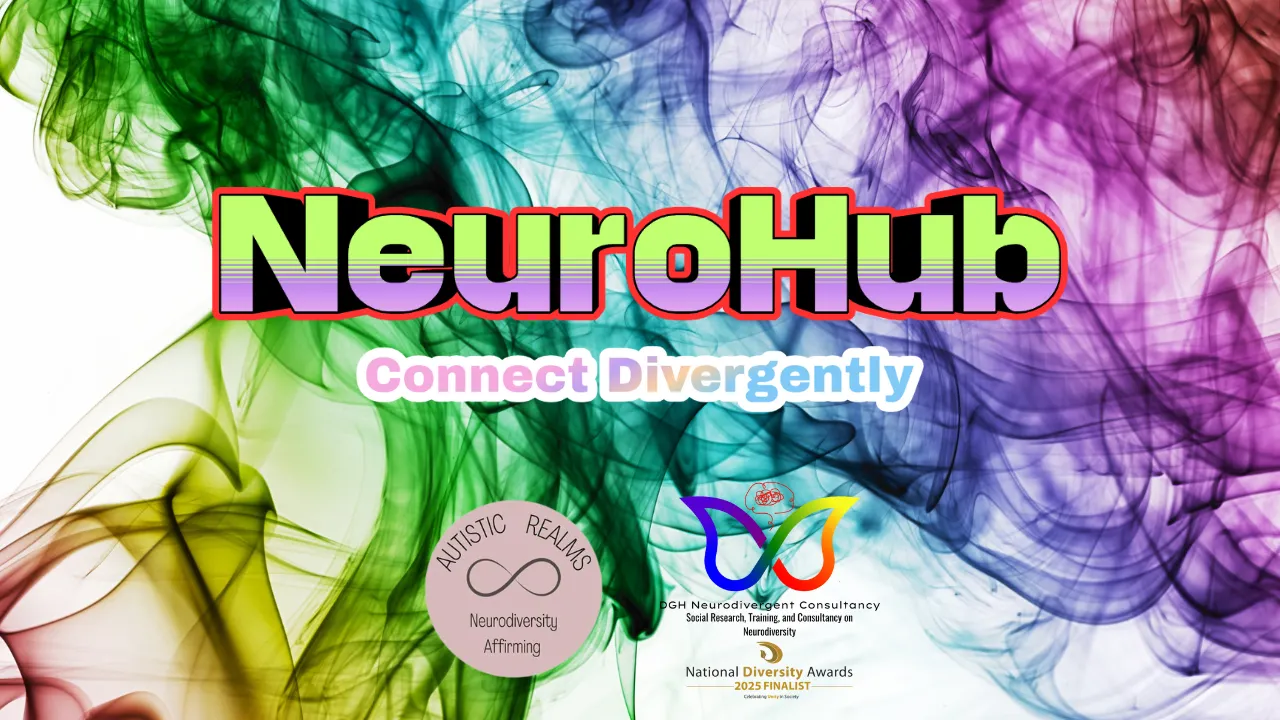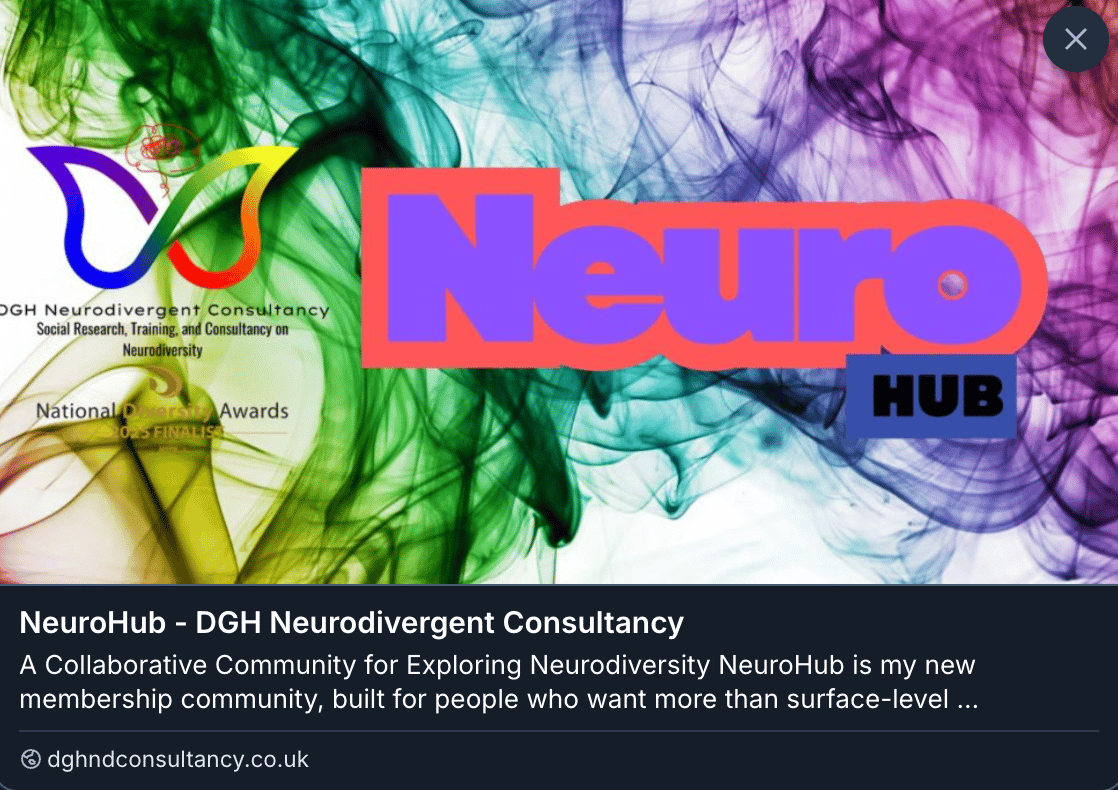Your basket is currently empty!

Neurodivergent Base-Camp
Explaining what it is like to be autistic to non-autistic people can be difficult.
To quote Dawn Prince-Hughes (Cultural Autism Studies at Yale), being autistic is like “being human without the skin”. This can be difficult for non-autistic people to understand.

Seeing and feeling the blank looks and Double Empathy Problem (Milton, 2012) at a really extreme DEEP level and still desperately trying to explain how you feel is exhausting!
Writing 100,000-word text messages to your friends and colleagues to try and justify and validate why you can’t do something or why you have done it the way you have because you’re monotropic and don’t want to miss out on any details is a very real thing!
Being with people who understand and “get it” is validating and important.
We all need a base camp. A base camp is a niche place of safety and radical inclusion. It is a safe place where you can be yourself and explore your identity, a space where people ‘get you’, where there is a more level playing field of shared life experiences from which to form friendships and explore new terrain. A base camp is a validating space where people encourage you to be you and even expand your version of yourself. A space where different ways of communicating, moving and different sensory experiences are validated and where co-regulation is a foundation stone that enables inter-dependence and independence.
Base Camps come in many forms: families, face to face community groups and also online communities.
In collaboration with Stimpunks, I have been exploring Neuroqueer Learning Spaces. These primordial learning spaces enable everyone to thrive in their own authentic, unique ways. They provide a basecamp from which to explore and learn with others in your own way in your own time and in a space that is comfortable.
The three primordial learning spaces comprise of Campfires, Watering Holes and Cave Spaces:

Caves: Space for quiet reflection, introspection and self-directed learning.
A private space to transform learning from external knowledge to internal belief. Home of reflective construction.

Campfires: Space for learning with a storyteller, an elder or from others. Education facilitators need to subvert neuronormativity actively. They need to embark on their transformative neuroqueer journey so their re-storying can inspire neuro-cosmopolitanism.
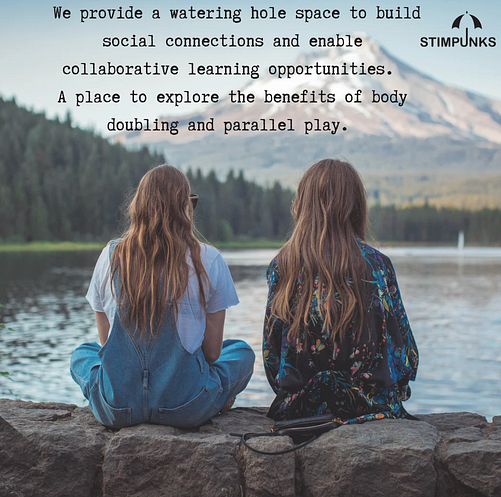
Watering holes: Space for being with peers and social learning in validating neurodivergent ways by embracing parallel play and body doubling experiences.
Community enables thoughts and ideas to expand rhizomatically. Valuing differences and unique strengths expands creativity into new horizons and can create a collective flow full of potential.
Caves, campfires, and watering holes are:-
- Necessary to provide psychological safety and sensory safety.
- Necessary to positive niche construction.
- Necessary to intermittent collaboration
- Necessary to design for neurological pluralism.
- Essential to our conception of Cavendish Space.
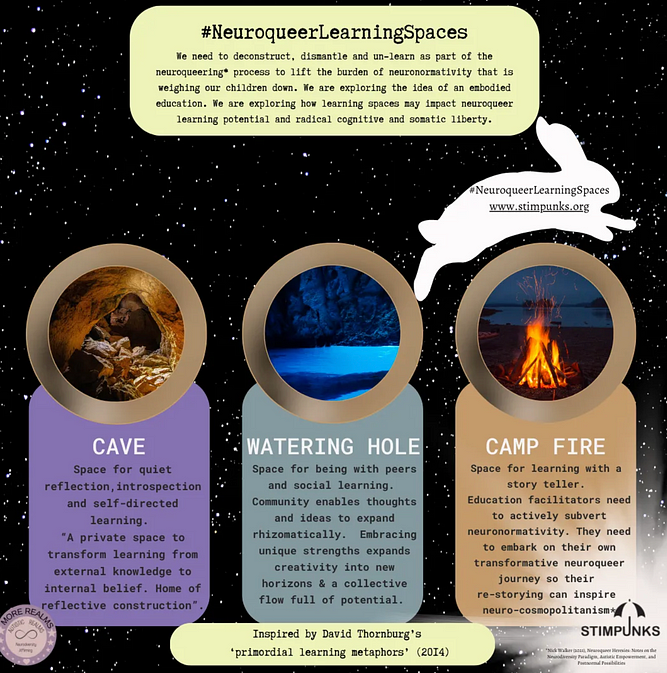
Find out more about Neuroqueer Learning Spaces and also discover Stimpunks Learning Pathways on their website. Learning Pathways are nestled within the online rhizomatic forest of the Stimpunks website. Learning Pathways is a free, open-access online tool set up to support and guide you on your journey of self-discovery. It provides the tools to help empower you as an autistic, disabled or otherwise marginalised person to self-advocate for your needs and promotes agency and autonomy.
A learning pathway is a route a learner takes through a range of pages, modules, lessons, and courses to build knowledge progressively.
Pathways don’t need to be traversed in order. Pick what looks interesting. Choose your own adventure.
Pathways
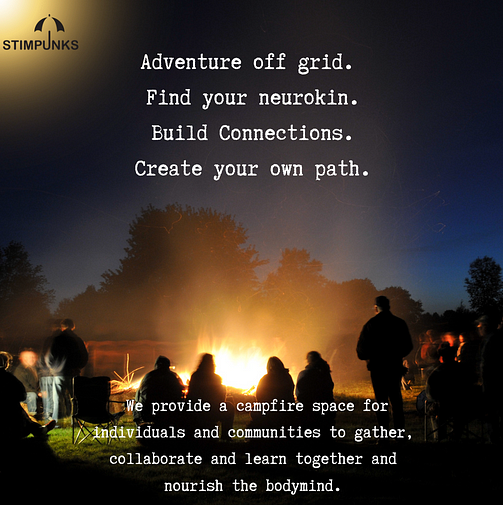
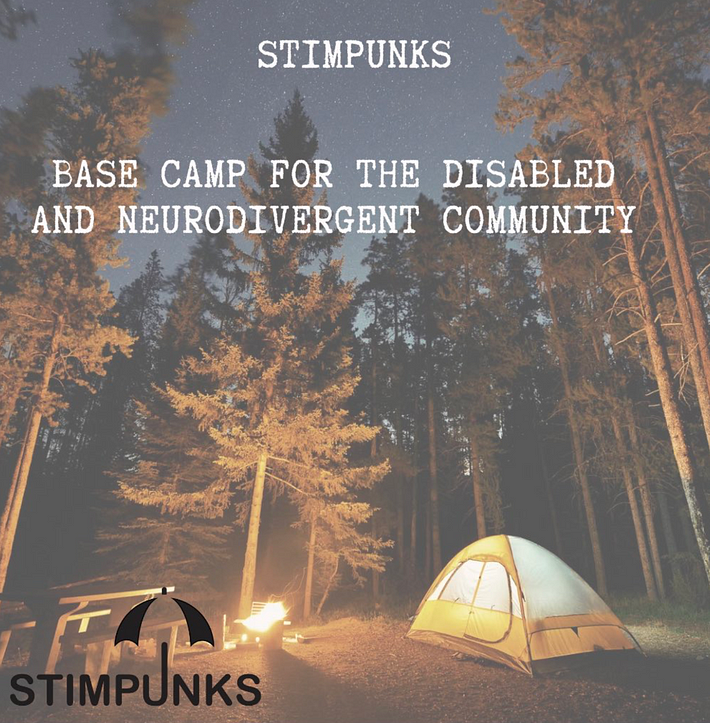

Latest Posts
-
Autistic Burnout – Supporting Young People At Home & School

Autistic burnout in young people is real—and recovery starts with understanding. This post offers neuroaffirming ways to spot the signs, reduce demands, and truly support. 💛 #AutisticBurnout #Neuroaffirming #Monotropism #AutisticSupport
-
Monotropic Interests and Looping Thoughts

The theory of monotropism was developed by Murray, Lawson and Lesser in their article, Attention, monotropism and the diagnostic criteria for autism (2005). Monotropism is increasingly considered to be the underlying principle behind autism and is becoming more widely recognised, especially within autistic and neurodivergent communities. Fergus Murray, in their article Me and Monotropism:…
-
Map of Monotropic Experiences

Monotropism seeks to explain Autism in terms of attention distribution and interests. OSF Preprints | Development and Validation of a Novel Self-Report Measure of Monotropism in Autistic and Non-Autistic People: The Monotropism Questionnaire This map highlights 20 common aspects of my personal monotropic experiences. How many do you experience? Where are you on the map…
-
Autistic Burnout – Supporting Young People At Home & School

Being autistic is not an illness or a disorder in itself, but being autistic can have an impact on a person’s mental and physical health. This is due to the often unmet needs of living in a world that is generally designed for the well-being of people who are not autistic. In addition, three-quarters of…
-
The Double Empathy Problem is DEEP

“The growing cracks in the thin veneer of our “civilised” economic and social operating model are impossible to ignore”, Jorn Bettin (2021). The double empathy problem (Milton, 2012) creates a gap of disconnect experienced between people due to misunderstood shared lived experiences. It is “a breakdown in reciprocity and mutual understanding that can happen between people…
-
Top 5 Neurodivergent-Informed Strategies

Top 5 Neurodivergent-Informed Strategies By Helen Edgar, Autistic Realms, June 2024. 1. Be Kind Take time to listen and be with people in meaningful ways to help bridge the Double Empathy Problem (Milton, 2012). Be embodied and listen not only to people’s words but also to their bodies and sensory systems. Be responsive to people’s…
-
Autistic Community: Connections and Becoming

Everyone seeks connection in some way or another. Connections may look different for autistic people. In line with the motto from Anna Freud’s National Autism Trainer Programme (Acceptance, Belonging and Connection), creating a sense of acceptance and belonging is likely to be more meaningful for autistic people than putting pressure on them to try and…
-
Monotropism, Autism & OCD

This blog has been inspired by Dr Jeremy Shuman’s (PsyD) presentation, ‘Neurodiversity-Affirming OCD Care‘ (August 2023), available here. Exploring similarities and differences between Autistic and OCD monotropic flow states. Can attention tunnels freeze, and thoughts get stuck? Autism research is shifting; many people are moving away from the medical deficit model and seeing the value…
-
Monotropism Questionnaire & Inner Autistic/ADHD Experiences

Post first published 28th July 2023 Over the past few weeks, there has been a sudden surge of interest in the Monotropism Questionnaire (MQ), pre-print released in June 2023 in the research paper ‘Development and Validation of a Novel Self-Report Measure of Monotropism in Autistic and Non-Autistic People: The Monotropism Questionnaire.‘ by Garau, V., Murray,…
-
Penguin Pebbling: An Autistic Love Language

Penguin Pebbling is a neurodivergent way of showing you care, like sharing a meme or twig or pretty stone to say “I’m thinking of you,” inspired by penguins who gift pebbles to those they care about.
-
What schools and parents need to understand about supporting Autistic and neurodivergent children

What schools and parents need to understand about supporting Autistic and neurodivergent children
-
Join NeuroHub Community Space

Join me & David Gray-Hammond in our new community NeuroHub. Access to exclusive webinars, resources and space to connect with others! Hope to see some of you there!
-
New Community NeuroHub Space with David Gray-Hammond

Autistic RealmsHelen Edgar Autistic Advocate, Author & ConsultantNeurodiversity-Affirming Supporting Autistic People To Grow & Thrive Welcome to Autistic Realms Newsletter! Exciting news! David Gray-Hammond (Emergent Divergence) has a new community: NeuroHub! I’m really delighted to be collaborating with David and to be part of this new community space as an affiliate.Why NeuroHub?Because the neurodiversity paradigm…











